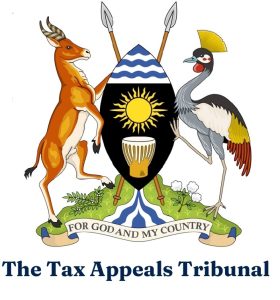Government has withdrawals the National Tribunal Bill, 2024 that sought to merge the Tax…
TAT Invites Public Comments on Proposals to Streamline Procedures at the Tax Appeals Tribunal
18th Floor NIC Building Plot 3 Pilkington Rd, P.O. Box 7019 Kampala-Uganda East Africa
CIRCULAR No. 2 of 2024
Date: 28th November 2024
To All Users of the Tax Appeals Tribunal
Invitation for Comments on Proposals for Streamlining Procedure at the Tax Appeals Tribunal
We are pleased to share with you a copy of the above proposals for your comments. As part of our stakeholder’s engagement process, we invite you to review the document and provide your valuable comments and feedback.
We kindly request that you submit your comments by 15” December, 2024 to solomon.wamai@tat.go.ug
Your input will be invaluable in shaping the final version of the document. If you have any questions or concerns, please do not hesitate to reach out to us
Thank you for your time and consideration.
Yours faithfully,
Racheal Kisakye
Registrar
STREAMLINING PROCEDURE AT THE TAX APPEALS TRIBUNAL
Objective: Moving from “h earing an d determining” to “resolving” tax disputes
-
Background
The Tax Appeals Tribunal (“the Tribunal”) was established in 1997 by the Tax Appeals Tribunal Act, Cap. 341.
The mandate of the Tribunal is to resolve tax disputes between taxpayers and the Uganda Revenue Authority. This mandate is pursuant to Article 152 of the Constitution of the Republic of Uganda.
Over time, the number of tax disputes has grown significantly following the decision in Rabbo Enterprises (U) Ltd & Mt. Elgon Hardware Ltd v Uganda Revenue Authority, SCCA No. 12 of 2004, which confirmed the Tribunal’s status as a court of first instance for tax matters. Following this decision, the number of disputes filed before the Tribunal have more than quadrupled since 2017 to date. This upward trajectory is continuing as the Tribunal receives an average of 35 – 40 new disputes every month.
-
Implications
Consequently, the above state of affairs has led to the accumulation of case backlog. The Tribunal targets to resolve disputes within six months; therefore, any dispute that is not resoIved within six months is considered backlog.
As at 15 November 2024, the Tribunal had a total case load of over 450 cases with a value of Shs 1.1 trillion. Approximately 70% of the disputes are older than six months.
Therefore, the Tribunal is continually reviewing its process and procedures with the primary objective of improving service delivery, increasing the rate of case disposal and consequently reducing case backlog.
In light of the above, with effect from 1 January 2025, the Tribunal will be implementing the following measures which Will improve efficiency in the dispute resolution process.
-
Proposed measures
One of the fundamental tenets of a tax tribunal is that proceedings should be conducted with as minimal formality and technicality as possible.
However, over time, there has been a proliferation of formalities and technicalities imported from courts of judicature. This delays the resolution of disputes and also limits access to the tribunal by ordinary citizens who are easily intimidated by formalities and technicalities.
Therefore, going forward, the Tribunal will increasingly adopt an administrative review approach and restrict judicial procedures to matters that primarily involve questions of legal interpretation.
The ultimate objective is to focus on tax dispute resolution rather than hearing and determining disputes as is the practice with proceedings of an adversarial nature.
This approach will require the direct involvement of the persons that participated in the proceedings that gave rise to the dispute, namely, the assessing officers on the part of the Uganda Revenue Authority and the Applicant’s personnel who were involved in the audit and objections process (collectively referred to as “the parties”).
Therefore, effective 1 January 2025:
1. Proceedings at the Tribunal will begin with conferencing. Attendance will be mandatory for both parties. The parties may choose to attend by themsel\/es or with their advisors / However, conferencing will not take place without the parties. During conferencing:
a).Parties will be required to explain the history, context, facts and substance of the dispute and the basis for the respective positions taken;
b).Parties will be required to present the documents and information that they relied on during the audit and objection stages of the
2. Where it is determined that the dispute is primarily reconciliation related, the Tribunal will refer the matter to a mediator to guide the parties through Where it is established that a matter is primarily a question of law or requires interpretation, the Tribunal will fix the matter for hearing.
3. At the end of conferencing, the Tribunal will guide the parties on the information or evidence required to resolve the The information will either be provided to the mediator or form part of the joint trial bundle for matters proceeding to trial. This is aimed at curbing the practice of providing documentation that is not relevant to the dispute.
4. Timelines will be given for mediation with specific action points. Parties that are referred for mediation will be required to periodically report back to the Tribunal on the progress of the mediation. This will curb the practice of non-attendance of mediation
5. At hearings, the Tribunal will adopt an inquisitorial approach aimed at establishing how the tax law has been applied to the facts. As assessments are based on the tax law, both the Applicant and the Respondent should readily explain the basis for their positions.

